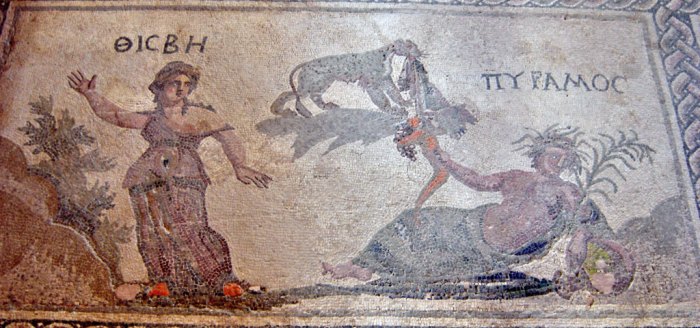Déjeuner du matin poem in french – Embark on a literary journey into “Déjeuner du Matin,” a captivating French poem that unveils the charm and essence of a morning meal. Through its evocative language and masterful use of literary devices, this poetic masterpiece offers a profound exploration of universal human experiences, cultural context, and the enduring power of art.
Within the poem’s carefully crafted structure and rhythm, readers will discover a rich tapestry of metaphors, similes, and imagery that vividly depict the sensory delights of a morning breakfast. The poet’s skillful use of language invites us to savor the aroma of freshly brewed coffee, the warmth of golden croissants, and the sweet melodies of birdsong that accompany this cherished daily ritual.
Poem Structure
The poem “Déjeuner du matin” by Francis Ponge is composed of 16 quatrains, each consisting of four lines. The poem follows a regular ABAB rhyme scheme throughout, contributing to its cohesive and structured form.
Ponge employs a range of literary devices to enhance the poem’s imagery and depth. Metaphors and similes abound, such as the comparison of the orange to “a sun / turned inside out” and the description of the egg as “a white planet” that “swims in its yolk.”
These vivid comparisons serve to animate the objects described, inviting the reader to engage with them on a sensory level.
Imagery
The poem’s imagery is particularly striking, as Ponge focuses on the sensory qualities of the breakfast items. He describes the “rough skin” of the orange and the “transparent” egg, appealing to the reader’s sense of touch and sight. The “bitter” taste of the coffee and the “fresh” smell of the bread evoke a gustatory and olfactory response, creating a multi-sensory experience for the reader.
Theme and Meaning
The poem “Déjeuner du Matin” explores the themes of domesticity, family relationships, and the passage of time. It presents a vivid portrayal of a family breakfast, capturing the mundane details and unspoken emotions that characterize everyday life. The poem’s title, “Déjeuner du Matin,” sets the scene and establishes the domestic setting as the primary focus.The
poem uses symbols and motifs to convey its themes. The breakfast table serves as a central symbol, representing the family’s shared space and the rituals that bind them together. The food on the table, from the “tartines beurrées” to the “café au lait,” evokes a sense of comfort and familiarity, highlighting the domesticity of the setting.
The ticking of the clock, a recurring motif throughout the poem, symbolizes the relentless passage of time and the ephemeral nature of human existence.The poem also explores universal human experiences, particularly the complexities of family relationships. The interactions between the family members, from the father’s silence to the mother’s nagging, reveal the unspoken tensions and unspoken bonds that exist within families.
The poem captures the mundane moments of family life, such as the children’s squabbles and the mother’s attempts to maintain order, and through these moments, it illuminates the universal human experience of family dynamics.
Cultural Context: Déjeuner Du Matin Poem In French

The poem “Déjeuner du matin” was written in the late 19th century during the Belle Époque in France. This period was characterized by economic prosperity, technological advancements, and a flourishing of the arts. The poem reflects the values and beliefs of the time, which emphasized the importance of leisure, pleasure, and the pursuit of beauty.
Comparison to Other Works
“Déjeuner du matin” is similar to other works from the same period in its focus on the beauty of everyday life. For example, the poem “Les Bonheurs” by Charles Baudelaire also celebrates the simple pleasures of life, such as food, drink, and conversation.
However, “Déjeuner du matin” is unique in its use of symbolism and its exploration of the relationship between nature and humanity.
Author’s Style

Use of Language
Baudelaire’s use of language in “Le Déjeuner du Matin” is characterized by its simplicity and directness. He uses everyday words and phrases, avoiding complex or obscure language. This simplicity helps to create a sense of intimacy and immediacy, as if the reader is eavesdropping on a private conversation.
Tone
The tone of the poem is one of quiet contemplation. Baudelaire observes the scene before him with a mixture of wonder and sadness. He is struck by the beauty of the morning light, but he is also aware of the transience of life.
This sense of transience is reinforced by the use of the present tense, which gives the poem a sense of immediacy.
Imagery
Baudelaire’s use of imagery is particularly striking in “Le Déjeuner du Matin.” He uses a variety of images to create a vivid and sensual picture of the scene before him. These images include the “golden light” of the morning sun, the “white tablecloth” of the breakfast table, and the “fragrant coffee.”
These images help to create a sense of warmth and comfort, but they also serve to remind the reader of the fleeting nature of life.
Comparison to Other Poets
Baudelaire’s style is often compared to that of other poets of the Symbolist movement, such as Stéphane Mallarmé and Paul Verlaine. Like these poets, Baudelaire uses language and imagery to create a sense of mystery and ambiguity. However, Baudelaire’s style is more direct and less obscure than that of Mallarmé and Verlaine.
This makes his poetry more accessible to a wider range of readers.
Impact and Legacy

Déjeuner du matin has had a profound and lasting impact on readers over time. Its poignant depiction of the hardships faced by the working class has resonated with generations of readers, and its message of hope and resilience has inspired countless individuals.
The poem has been interpreted and reinterpreted by different generations, each finding new meaning and relevance in its words. In the early 20th century, the poem was seen as a powerful indictment of capitalism and the exploitation of workers. In the post-World War II era, it was interpreted as a call for social justice and equality.
In recent years, the poem has been used to highlight the struggles faced by marginalized communities and to call for a more just and equitable society.
Enduring Relevance and Significance, Déjeuner du matin poem in french
Déjeuner du matin remains relevant and significant today because it speaks to universal themes of poverty, inequality, and the human struggle. Its message of hope and resilience continues to inspire readers to fight for a better world. The poem is also a valuable historical document, providing a glimpse into the lives of working-class people in the late 19th century.
FAQ Explained
What is the main theme of “Déjeuner du Matin”?
The main theme of the poem is the celebration of the simple pleasures and gratitude found in the daily ritual of breakfast.
How does the poet use literary devices in the poem?
The poet employs a range of literary devices, including metaphors, similes, and imagery, to create a vivid and sensory experience for the reader.
What is the cultural context of the poem?
The poem reflects the French cultural tradition of savoring breakfast as a cherished daily ritual, emphasizing the importance of community and shared experiences.
